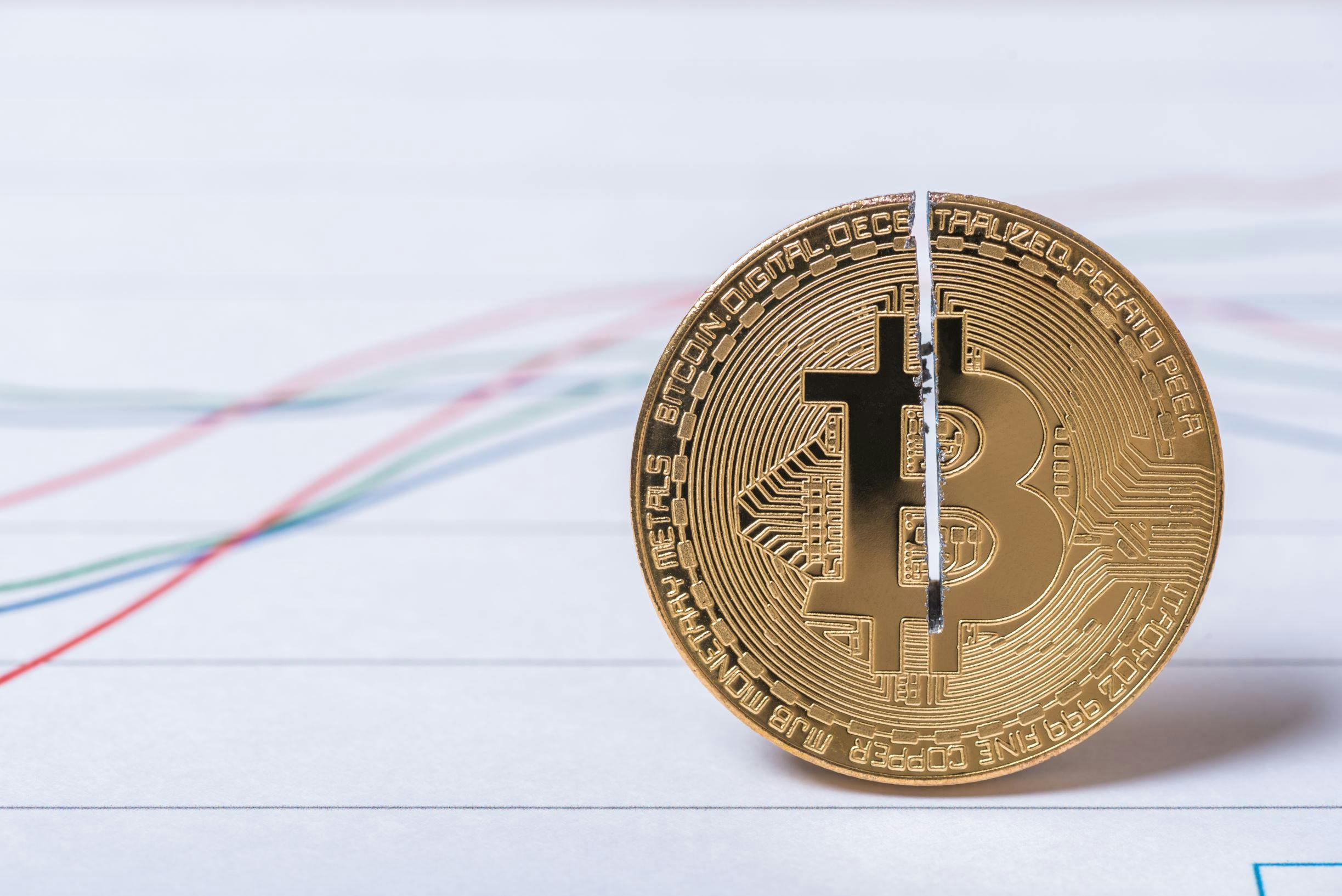
- All
- Tools
- Analytics
- Technical Analysis
- Trading
- Blockchain
- DeFi
- Guides
- Company News
- Educational
- Opinion
- Price Predictions
- Market News
- News
- Trading cases
- Practical guides
- Exchanges
- Trading signals
- Cryptocurrency
- Crypto bots
- Other
Become a crypto master
Learn everything about crypto,
trading and bots

Technical analysis in cryptocurrency trading: advantages and disadvantages
Start Trading on 3Commas Today
Get full access to all 3Commas trading tools with free trial period

What is technical analysis in cryptocurrency trading?
Technical analysis in cryptocurrency trading is the study of the movement of the market price of the cryptocurrency, which allows predicting further fluctuations in the rate. It is made based on the characteristic laws of a certain cryptocurrency or the market as a whole.
Simply put, technical analysis allows to determine what will happen to the rate of a certain currency shortly based on historical market data.
Japanese rice traders started using this method several centuries ago. Later, in the early twentieth century, specializing in Finance, American journalist Charles DOE published a series of articles in which he described the patterns of growth and decline in the securities market. Later, his works were extracted from the basic postulates that formed the basis of the “Dow Theory”, which became the basis of technical analysis.
Dow theory in conjunction with the practice of technical analysis allowed to determine three main theses of technical analysis. They are universal and fully applicable in the cryptocurrency market:
- There are no accidents. Every price change in the market is caused by something. If you determine the reason, the next time a similar reason appears, it will be easier to predict the price movement.
- History repeats itself. What has already happened in the market can happen a second time. Consequences are likely to be the same.
- Patterns work. Trend (the motion vector of the prices) tends to maintain direction. To influence it can only be what is comparable to him in strength. Weaker factors lead to a temporary fluctuation (correction of the cryptocurrency market), but not to a trend reversal.
At the time of Dow, technical analysis was carried out manually using tables and drawings.
With the advent of computers, technical analysis has become much easier: some programs were graphs of the course and added to them the tools of technical analysis — levels, contours, color and other indicators and so on.
Now, these charts are built into many cryptocurrency exchanges and work in an interactive mode.
Components of technical analysis in cryptocurrency trading
In addition to price charts, the following components are best known:
- Levels. The most commonly used support and resistance levels are the lines that are drawn through the extreme points on the price movement chart. The line drawn through the maximum points is called the resistance line, and the line drawn through the minimum points is called the support line. If the price of the cryptocurrency changes in the direction opposite to the trend within the lines, then we can talk about a correction, and if it goes beyond it, a trend reversal is not excluded. Of course, this is not the only information that can give the trader the levels.
- Figures. As mentioned above, history repeats itself. On the chart of the course, this is reflected by fluctuations, which in similar cases represent a similar graphic pattern, in which, if you use your imagination, you can see different shapes. For example, there is a figure “Head and shoulders” of the three highs, the average of which is slightly above the side (this is the “head”), and the sides are approximately equal (this is the “shoulders”). There are figures “Double bottom” and “Double top” — two minima or two maxima, going one after another. There are figures rectangular, triangular and so on. Each allows us to draw a conclusion about the situation on the market: whether the major players are waiting, or trying to collapse the course, whether the market is experiencing a certain situation that has happened more than once in the past. All this makes it possible to predict on the basis of past data further price movements.
- Indicators. This is a graphical display of mathematical calculations for certain formulas that are set by the trader or the program. The most famous example is the “moving averages” — irregular lines that reflect the average price of an asset for a certain period. Other constants and variables can be added to the formulas, depending on what the trader wants to see visually on the chart.
- Japanese candlestick. The invention of the founders of technical analysis — the above-mentioned Japanese traders. It is an interval chart in the form of rectangles reflecting price changes for certain periods of time. Visually often similar to the columns with “shadows”, due to what got its name. Popular because of its visibility: many traders note that they are most clearly displayed price fluctuations. Candlestick charts also have their own shapes, which are used on the same principle as on conventional charts.
- Trading volume. They can be displayed as a regular chart or as an interval chart. Also, reflect the size of demand and supply and allow you to do on the basis of these data conclusions. For example, if the trading volume increases with a certain trend, it means that the market supports what is happening and that the trend should not turn around. It may be the opposite: if the trading volume at a certain trend falls, the market does not support the trend (perhaps suspects inflating the “bubble” or another bad phenomenon), and therefore its reversal is likely.
- Elliott wave. One of the most complex tools of technical analysis, because it requires significant knowledge in mathematics. In fact, Elliott wave theory in the context of trading is a mathematical version of the Dow theory: it displays its postulates on the example of the wave chart. For example, it follows from the Elliott chart that the impulse wave (the beginning of the trend) is followed by a corrective (a small movement against), that there are three correction waves on five waves of the main trend, that the trend, like any price movement in principle, consists of a number of quite specific cycles, etc.
- This is not a complete list. In different textbooks, there are other components of technical analysis.
Usually, traders do not use all the tools at once but choose several convenient ones. Many displays the same data, only in different forms, and it all comes down to what form the trader best perceives. It depends on the cognitive characteristics of each person, so there are no optimal forms and, as a result, no tools.
Technical analysis in the trading of cryptocurrency: advantages
The advantages of technical analysis include the following features:
- In technical analysis, all the raw data are accurate and leave no room for misinterpretation. Data used in other forecasting methods are unreliable in the cryptosphere: there are few official reliable statements and many “ducks”. The quality also leaves much to be desired: incorrect translations and distorted retelling are common, and it is easy to misinterpret the information.
- In technical analysis, all data is displayed in real-time, so the trader has the opportunity to respond as quickly as possible. News on the crypto market appears late, so the news that affects the exchange rate of the cryptocurrency can get to the trader too late when the exchange will already react to it.
- Technical analysis works on the same principle as all currencies. For example, in fundamental analysis, a trader has to study different layers of information about the features of each cryptocurrency.
- Technical analysis provides sufficient data to work with little-known currencies.
- The trader can choose the most convenient tools, calculate the specific numbers of interest to him at a narrow interval according to the formula drawn up by him personally, and so on.
Technical analysis in the trading of cryptocurrencies: disadvantages
Among the disadvantages of technical analysis are the following:
- Late signals. Technical analysis does not allow us to see the first signs of a trend reversal. It displays the situation that is formed after the prerequisites for change.
- Inefficiency in the intervention of third-party factors. Technical analysis is based entirely on mathematics. Calculations are accurate for certain situations, but the problem is that completely identical situations in the market practically do not happen. Often intervenes minor extraneous factor, which for mathematical accuracy is critical and makes all predictions wrong.
- Less efficiency in the crypto market. Compared to the traditional market, cryptocurrency indicators are changing faster, and even experienced players do not always have time to navigate in such a volume of information.
Technical analysis in the trading of cryptocurrencies: whether to use for beginners?
In addition to the above disadvantages, novice traders experience a number of problems when using technical analysis:
- Misinterpret graphics. In theory, everything is obvious, but in practice, it is impossible to see the figures, and the results of the analysis are far from reality.
- Too closely related to the theory. If the figure in the textbook on trading was specified one figure, then in practice beginners react to it only when it is almost identical to the example from the textbook. The same figures in different cases can be very different visually, which is disorienting for beginners.
- Make different conclusions. Moreover, this is also observed inexperienced traders: two analysts can make two different forecasts on the basis of one chart and confirm them with logical calculations. Sometimes it is impossible to say which of them is more likely to be right. Beginners have such problems much more often.
In addition, technical analysis will require time from a novice trader to study the theory, then time (and often money) for errors in practice and only after that will give the result.
Despite this, it is not advisable to abandon the use of technical analysis to a person who decided to try himself in cryptocurrency trading. These problems are solved with the help of practice. To make it easier, we founded SkyRockSignals
SkyRock Signalsis an experienced professionalcryptocurrency trading team that shares investment decisions, trading ideas, analytics, and signals. Our recommendations are based on bothTechnicalandFundamentalAnalyses along with multiple years oftrading experience.
Our subscribers at 3Commas Marketplace receive access to theautomatic premium trading botwhich allows them toearn stable profitand increase their deposit each month
- Binance and Bittrex
- BTC, ETH and USDT quote currencies
- Average profit per deal: 3%
- Up to 100 signals per week
- Duration: up to 3 hours
Our Basic Telegram channel will always stay free and we will continue providing free profitable trade ideas, market news and signals, the link is presented below: https://t.me/SkyRockSignalsBasic
Contacts:
Full-Premium Telegram channel registration form: https://goo.gl/Vxc66H
TradingView: https://www.tradingview.com/u/SkyRockSignals
Results: https://goo.gl/roXue6
Live chat and support: discord.gg/BBkKtcD
Website: www.SkyRockSignals.com
E-mail: info@skyrocksignals.com

A proven leader, successful at establishing operational excellence and building high-performance teams with a sharp focus on value creation and customer success.






